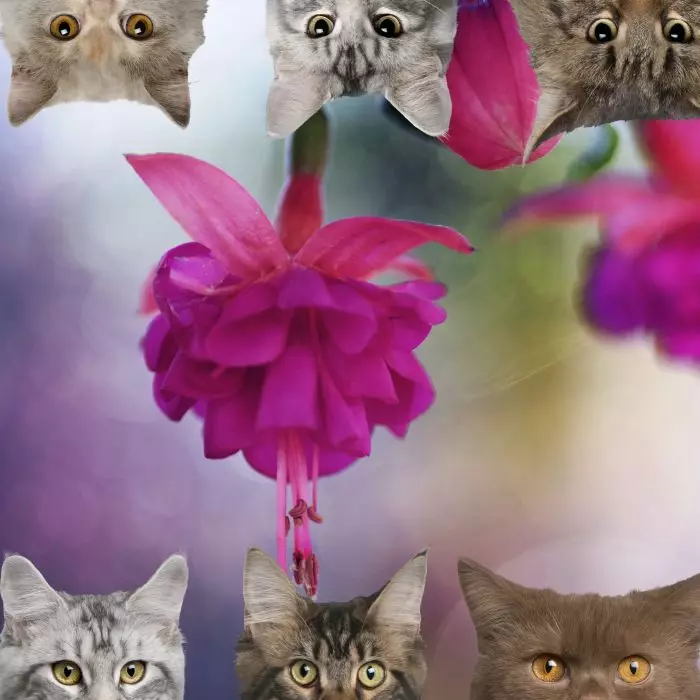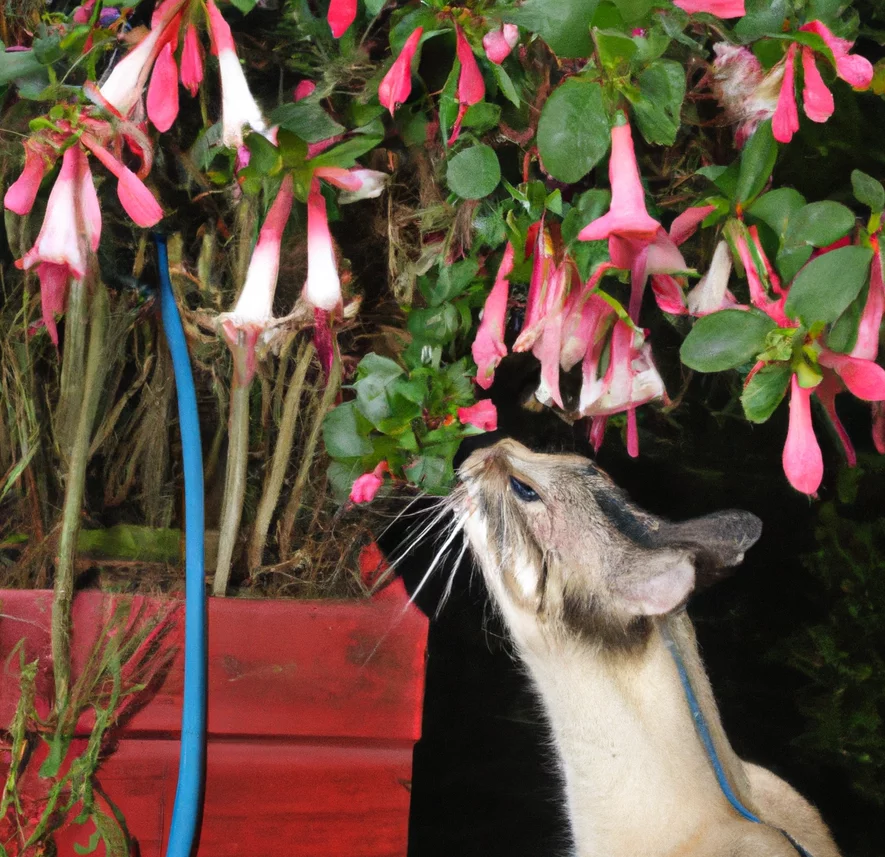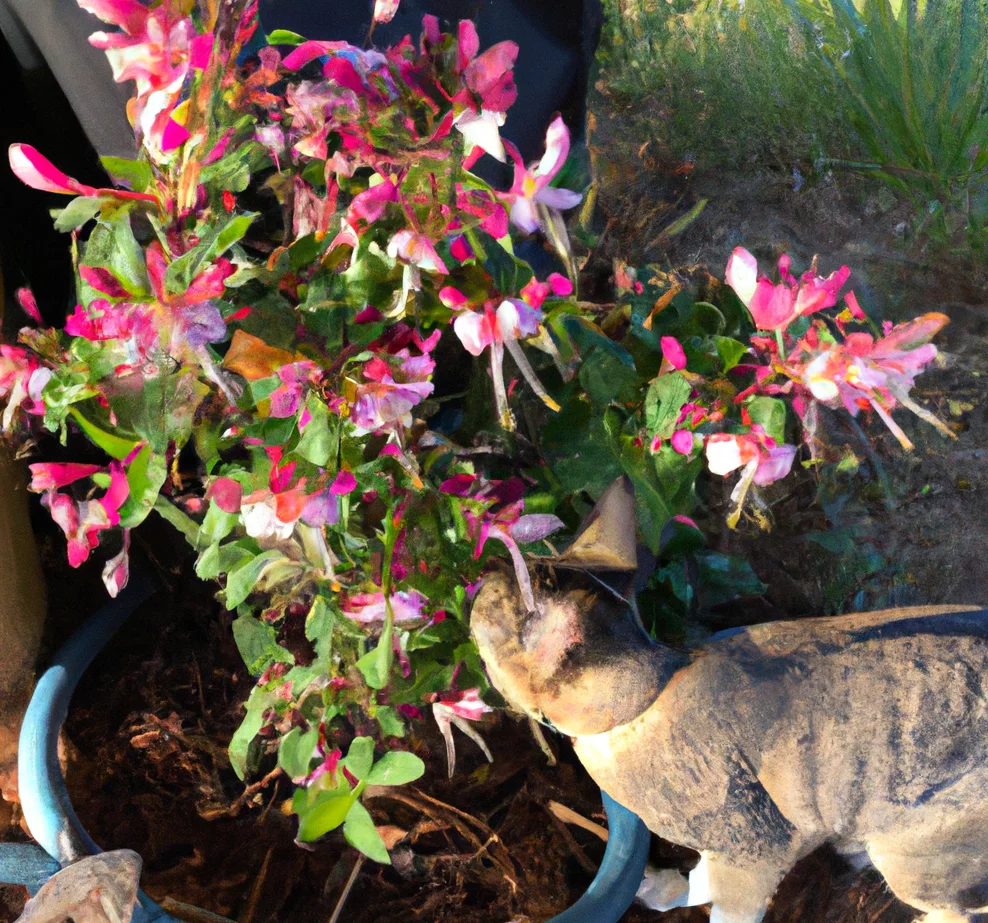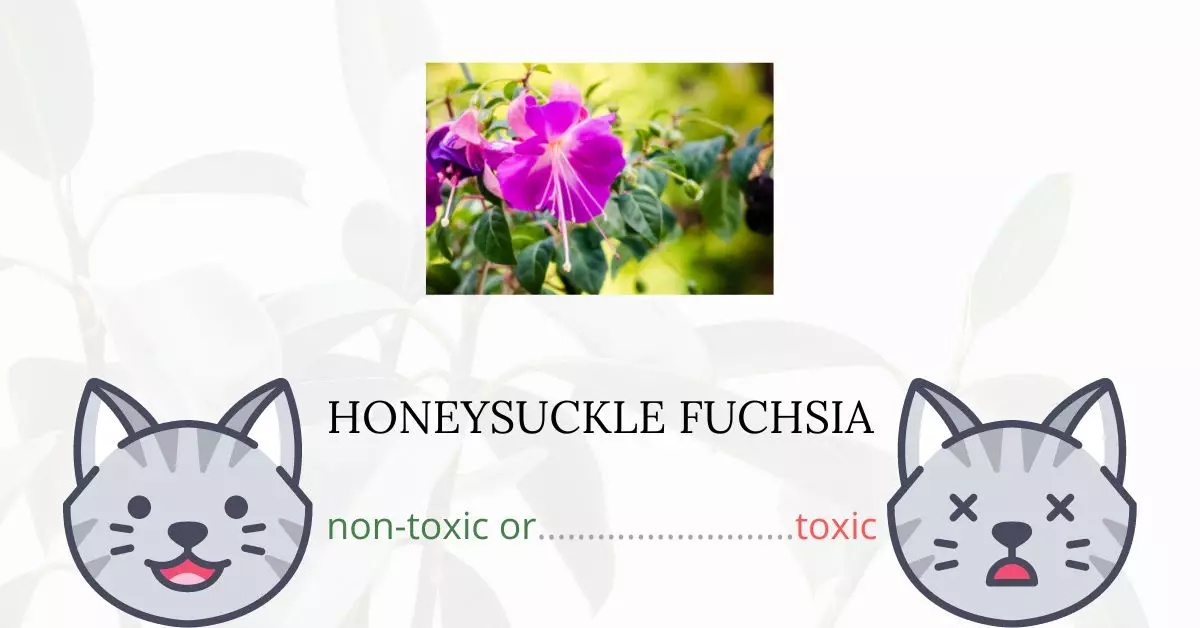Honeysuckle Fuchsia is not toxic to cats. In fact, the American Society for the Prevention of Cruelty to Animals (ASPCA) has listed it as one of the nontoxic plants for felines. It’s reassuring, especially given that many cats seem to be attracted to this shrubby evergreen and its beautiful blossoms.
This article has been crafted in close collaboration with a team of experienced DVMs (doctors of veterinary medicine). Their expertise, combined with our extensive research from high-authority websites such as ASPCA and PetMD, ensures that we provide accurate and up-to-date information concerning the potential risks associated with various plants, specifically the Honeysuckle Fuchsia, and their impact on cats.
Can Cats Eat Honeysuckle Fuchsia?

Honeysuckle Fuchsia poses no risk to your cat’s health. Your cat can be drawn to the flower because of its aroma, flavor, or the way it dangles from the stem. She won’t suffer any harm if she eats the flower, leaf, or stem.
It doesn’t mean though that your feline companion can munch on honeysuckle fuschias at any time. Plants should not be incorporated into a cat’s regular diet because they are obligate carnivores. Cats may experience indigestion if they eat large portions of plant materials.
What is Honeysuckle Fuchsia?

Honeysuckle fuchsia (Fuchsia triphylla) is one of the more than 110 species that make up the genus Fuchsia. The plant has assumed a significant role as a well-liked species to breed because of its attractiveness and its lengthy flowering period, which lasts from early spring to late autumn.
Honeysuckle fuchsia is a shrubby little plant. Two to three feet is the maximum height they can reach. The leaves are huge, oval, and plain. A reddish-maroon hue on the underside of the leaves, which distinguishes the petiole insertion, can be seen. Fuchsia triphylla produces long, tubular blooms. Flowers typically have a reddish-orange or reddish-purple tint. They have stamens that extend from the tip and have a tendency to droop over.
The main reason people cultivate this plant is for ornamental purposes. It is able to thrive in a respectable variety of conditions and grows best when not exposed to excessive amounts of direct sunshine.
Keeping Cats Away From Honeysuckle Fuchsia

Rocks can prevent your cat from harming your plants and make the pots a less appealing area for them to discharge themselves.
The secret is to scatter smooth stones at least an inch or preferably larger across the surface of the soil. Avoid using smaller stones since your pet can misinterpret them for litter and use it as permission to make the planter their new litter box.
Making your houseplants taste unpleasant might stop your cat from chewing them. Spray the stems, tops, and bottoms of the leaves lightly with bitter spray, and then allow them to air dry.
Reposition each plant to its usual location and watch your cat’s behavior as it tries to nibble a leaf. They may need a few tries before they decide they no longer want to use your beloved plant in a salad.
Plants to Avoid For Your Cats
If you are a cat owner and unsure if the plants growing in your yard are harmful to your cats, check out this list of toxic plants for cats. You can also check our list of non-toxic plants for cats.





